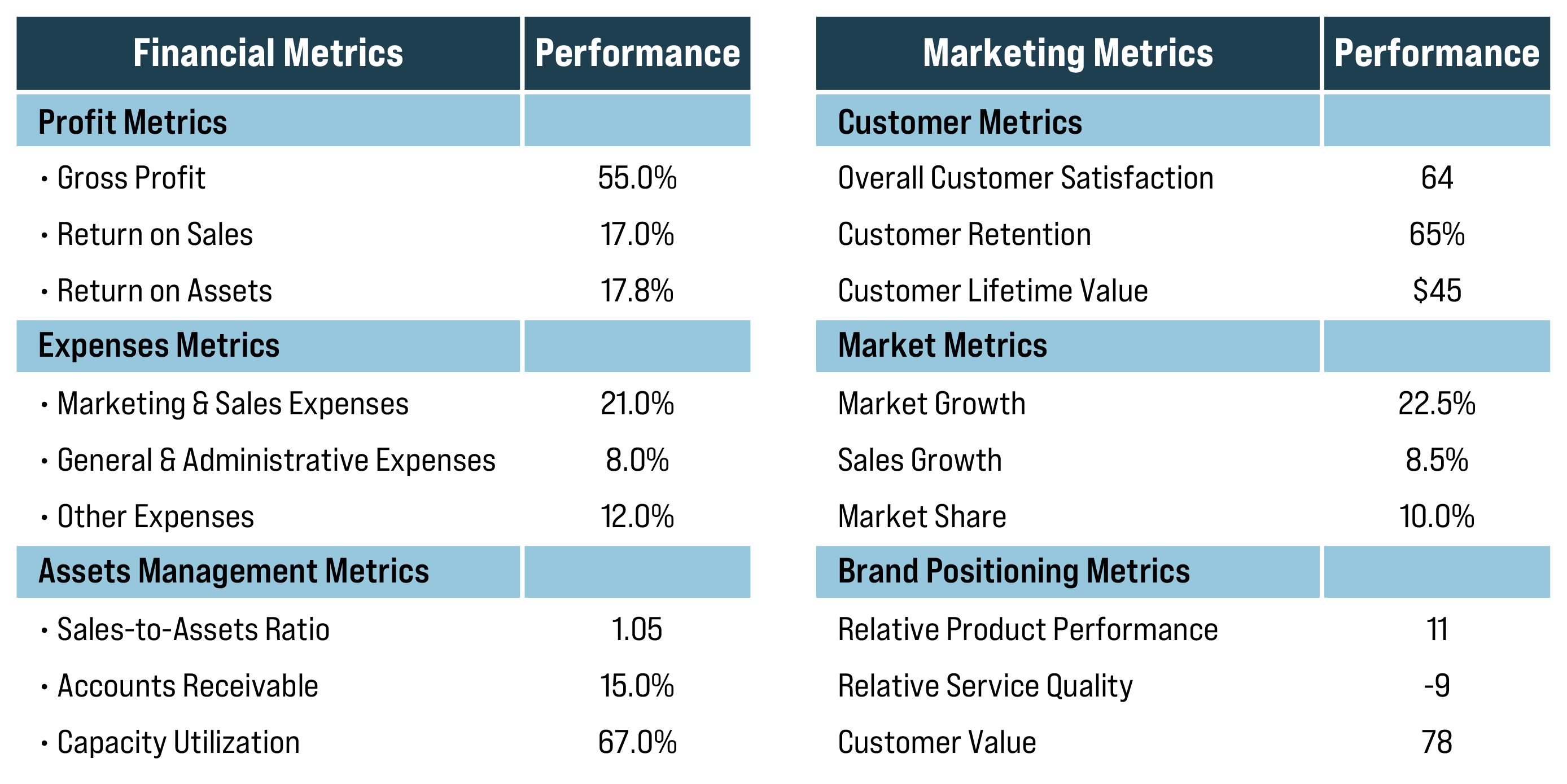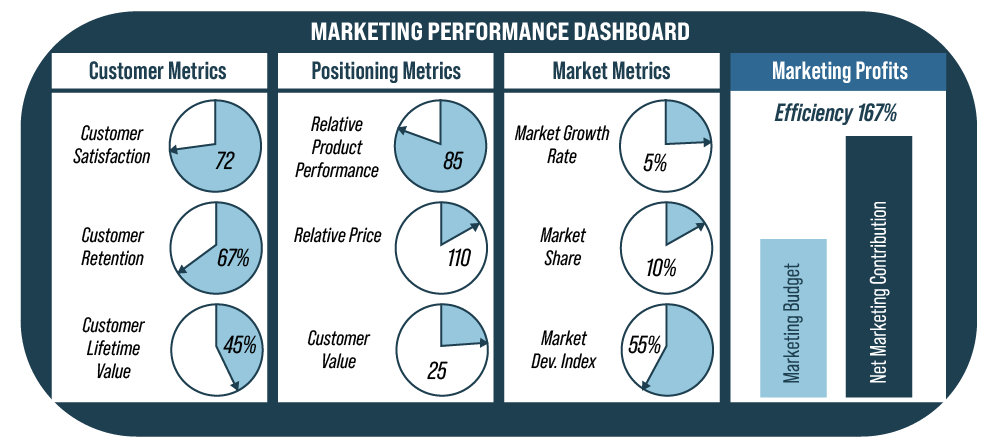Marketing metrics help a company measure its marketing performance. CMOs, marketing executives, brand managers and product managers can use marketing metrics to assess and demonstrate marketing’s contribution to a company’s sales and profitability [1]. As seen in Figure 1, a marketing metrics dashboard helps executives develop marketing strategies and relate them to marketing and company profitability.
FIGURE 1
Marketing Metrics: A Strategic Approach

Savy users of metrics not only understand the difference between financial and marketing metrics, but also the different types of marketing metrics available.
Financial versus Marketing Metrics. Most executives are familiar with financial metrics related to revenues, profits, expenses, and assets. They are less familiar with marketing metrics which include customer, market, and brand positioning metrics. While financial metrics are more internal and backward looking in nature, marketing metrics are more external and forward looking in nature. These are shown in Figure 2.
FIGURE 2
Financial Metrics versus Marketing Metrics

Customer, Brand Positioning, and Marketing Metrics: Companies should collect three types of marketing metrics.
- Customer Metrics—Customer metrics are based on customer behaviors and perceptions of a brand. Examples are customer satisfaction scores and retention rate.
- Brand Positioning Metrics—These measure performance relative to competitors. Examples are own and competitor measures of service quality, brand image, or price.
- Market Metrics—Market metrics gauge the performance of a business or product based on objective measures such as sales, sales growth, market share, and profit.
Classifying Marketing Metrics: As shown in Figure 3, marketing metrics can be internal versus external, and forward- versus backward looking.
FIGURE 3
Marketing Metrics Classification

Forward-looking metrics help companies predict future customer behaviors such as repurchase, positive word-mouth, and recommendations, behaviors that are related to future cash flow [2]. Due to their predictive nature, forward-looking metrics can be used for future planning. Customer satisfaction is one of the most important forward looking metric because it reliably predicts a company’s sales and profitability [3]. Backward-looking metrics, such as pre-tax net profit and market share, measure past performance and are applied at the end of the reporting period. They allow executives to take stock of how the company has performed. They can also tell a company where it stands concerning current performance but do not provide insights on future performance.
Metrics can also be classified as internal or external. Internal metrics can be gathered from within the company using existing data sources (e.g., return rate, late payments). External metrics require gathering data from customers, competitors or markets. Marketing metrics complement financial metrics and provide deeper and more useful insights for future planning. Figure 4 shows a marketing performance dashboard using different marketing metrics. CMOs can use it to drive performance and better explain and understand financial metrics.
FIGURE 4
Marketing Metrics Dashboard

Learn more about marketing metrics in Chapter 6 of Market-Based Management (7th edition). Chapter 1 can be reviewed online at www.mbm-book.com.
References:
- Schulze, Christian, Bernd Skiera, and Thorsten Wiesel (2012), “Linking customer and financial metrics to shareholder value: The leverage effect in customer-based valuation,” Journal of Marketing, 76(2), 17-32.
- Fischer, Marc, and Alexander Himmel (2017), “The financial brand value chain: How brand investments contribute to the financial health of firms,” International Journal of Research in Marketing, 34(1), 137-153.
- Mittal, Vikas and Eugene W. Anderson (1999), “Strengthening the satisfaction-profit chain” Journal of Service Research, 3(2), 107-120.
